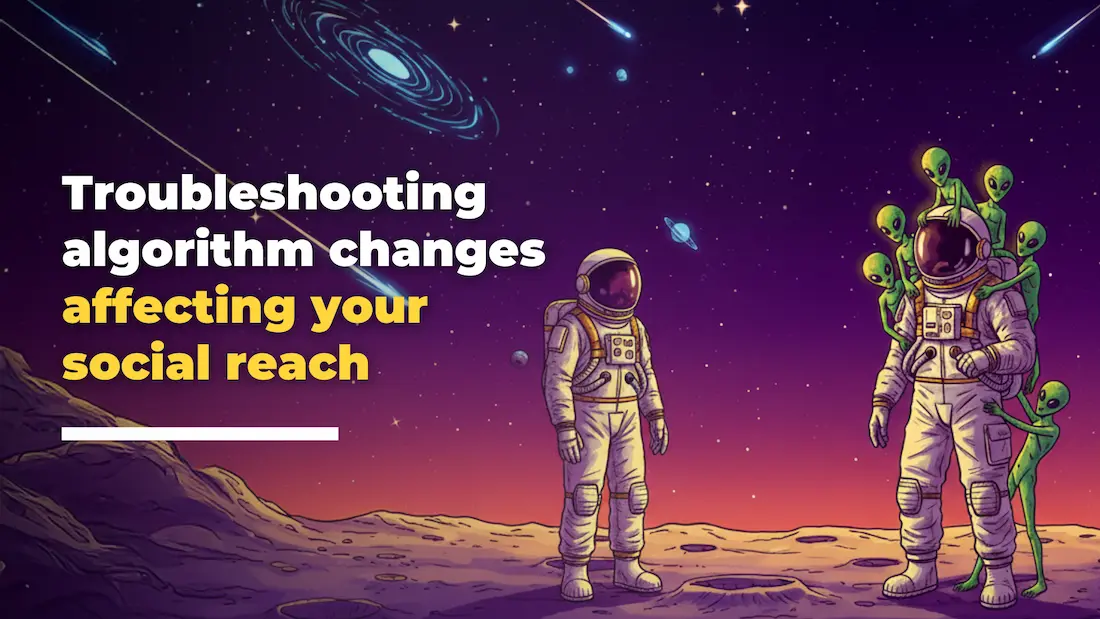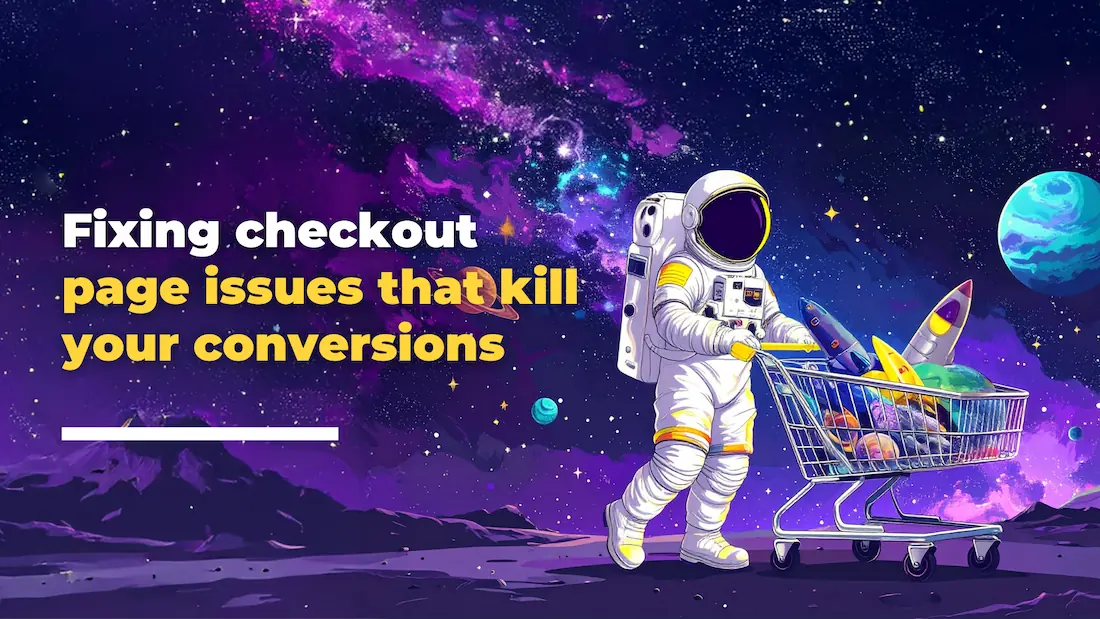You’re a founder or business leader in today’s digital economy, and you know that investing in digital advertising is non-negotiable for growth. You’re pouring resources into Google Ads, Meta (Facebook/Instagram), LinkedIn, and maybe even TikTok. But if you’re like many small business owners, you’re constantly asking: “Is this actually working?”
You might be getting basic reports: “Your ad got 10,000 impressions!” or “You received 50 clicks!” But these numbers, while seemingly positive, often don’t translate to tangible business outcomes like qualified leads, sales, or actual revenue. The frustration of unclear ROI is a constant drain on your energy and your budget. You know there’s more to digital ad performance than just clicks, but navigating the labyrinth of analytics platforms can feel like another full-time job.
At Loomo Marketing, we believe in replacing that confusion with a clear, strategic process. It’s not about getting more data; it’s about getting actionable insights that drive your business forward. Understanding what platforms offer advanced analytics for tracking digital ad performance is the first step toward transforming your ad spend from a guessing game into a predictable growth engine.
This article will cut through the noise, providing a comprehensive guide to the essential tools and platforms that empower you to not just track, but truly understand and optimize your digital ad performance for maximum ROI.
The Foundational Layer: Google Analytics 4 (GA4)
Before you dive into the specifics of ad platforms, you need a robust, unbiased “source of truth” for what happens after someone clicks your ad. That’s where Google Analytics 4 (GA4) comes in. While often seen as a general website analytics tool, its advanced capabilities are crucial for ad performance tracking.
Why it’s advanced for ad performance:
- Event-Driven Data Model: Unlike its predecessor (Universal Analytics), GA4 is built around “events” (like page views, scrolls, button clicks, form submissions, purchases). This provides a far more flexible and accurate way to track specific actions that indicate ad effectiveness, regardless of whether they happen on your website or app.
- Cross-Platform Tracking: GA4 unifies data from your website and app. This is critical for understanding the complete customer journey, especially if your ads direct users to different digital properties. You can see how an ad click on Facebook leads to app engagement and then a website purchase.
- Predictive Analytics: GA4 leverages Google’s machine learning to predict user behavior, such as purchase probability or churn probability. This allows you to create highly targeted audiences within Google Ads based on who is most likely to convert, significantly boosting your ad efficiency.
- Enhanced Integration with Google Ads: GA4 data can be directly linked to Google Ads, allowing you to import conversions and utilize GA4 audiences for smarter targeting and optimization within your campaigns.
- Customizable Reporting (Explorations): The “Explorations” section in GA4 allows you to build sophisticated custom reports, funnels, path explorations, and segment overlaps. This lets you drill deep into specific user segments and understand exactly how your ad traffic behaves once it hits your site.
Loomo Insight: GA4 is your essential, free “control tower” for post-click behavior. Master it to understand the true impact of all your digital ads, regardless of their source.
Native Ad Platform Analytics: The Engine Room of Optimization
For the most granular, real-time data about your actual ad campaigns (impressions, clicks, costs, ad creative performance), you must become proficient with the analytics offered within each ad platform itself. These are your daily dashboards for optimization.
1. Meta Ads Manager (Facebook & Instagram Ads)
- What Makes It Advanced: Offers a treasure trove of performance metrics, from traditional CPA (Cost Per Acquisition) and ROAS (Return On Ad Spend) to more nuanced metrics like frequency, reach, and detailed breakdown by demographics, placements, and creative. Its custom reporting features allow you to build dashboards tailored to specific campaign goals. You can directly track lead form submissions, website conversions (via the Meta Pixel/Conversions API), and even offline conversions.
- Key Features for Advanced Tracking: A/B testing, audience overlap insights, multi-touch attribution modeling, and detailed video engagement metrics for video campaigns.
2. Google Ads
- What Makes It Advanced: The nerve center for Search, Display, YouTube, and Shopping ads. Google Ads analytics are deeply integrated with the entire Google ecosystem (GA4, Google Business Profile).7 You gain insights into:
- Auction Insights: See how your ads stack up against competitors, revealing impression share, overlap rate, and outranking share.
- Performance Planner: Forecast how changes to your campaigns (budgets, bids) can impact clicks, conversions, and ROI.
- Robust Conversion Tracking: Track calls, website sales, lead forms, and even app downloads with precision. Enhanced Conversions use first-party data to improve accuracy.8
- Attribution Models: Choose from various attribution models (last click, data-driven, linear, time decay) to understand which touchpoints get credit for a conversion.
3. LinkedIn Campaign Manager
- What Makes It Advanced (for B2B): While not as broad as Google or Meta, LinkedIn’s strength lies in its unique professional targeting. Its analytics provide unparalleled insights into the demographics and firmographics of your ad responders: job titles, industries, company size, and seniority. This allows B2B marketers to refine their targeting to reach decision-makers more effectively.
- Key Features: Lead Gen Form reporting, website demographics, and conversion tracking with valuable insights into the professional profiles of those converting.
4. TikTok Ads Manager
- What Makes It Advanced (for specific audiences): For businesses targeting younger demographics or leveraging viral trends, TikTok’s analytics provide real-time performance data, video completion rates, and audience demographics.9 Its unique “Spark Ads” feature allows you to leverage organic content for paid promotion, and its analytics help measure the combined impact.10
- Key Features: Custom dashboards, event tracking for in-app and website conversions, and audience insights based on behavior on the platform.
Loomo Insight: Don’t ignore the native platforms. They provide the deep, real-time insights you need to optimize your campaigns daily and squeeze every drop of ROI from your ad spend.
All-in-One Marketing & CRM Platforms: Connecting Ads to Revenue
For businesses focused on the entire customer journey, linking ad performance directly to your CRM (Customer Relationship Management) is paramount. These platforms excel at showing the true ROI of your ads by connecting them to actual sales.
1. HubSpot
- What Makes It Advanced: HubSpot’s strength is its full-stack integration. Its Ads Software allows you to manage Google, Meta, and LinkedIn ads from one dashboard. Critically, it connects ad spend directly to its powerful CRM. This means you can see exactly which ad campaign, ad set, or even individual ad generated a specific lead, nurtured them through your sales funnel, and ultimately became a paying customer.
- Key Features: Automated ad reporting, revenue attribution (showing dollars generated per ad campaign), lead tracking through the sales cycle, and audience synchronization with ad platforms.
2. ActiveCampaign
- What Makes It Advanced: Primarily an email marketing and marketing automation platform, ActiveCampaign also offers robust native integrations with ad platforms. You can sync customer lists for retargeting, track conversions from ads directly into your CRM, and segment your audience based on ad engagement for highly personalized follow-up campaigns.
- Key Features: Deep automation capabilities, customer journey mapping, and lead scoring based on ad interactions and other marketing touchpoints.
Loomo Insight: These platforms are for founders who want a holistic view of ROI. They help answer the ultimate question: “How much revenue did this specific ad campaign generate for my business?”
Business Intelligence (BI) & Data Visualization Tools: The Executive Dashboard
For businesses running complex ad campaigns across many channels, integrating data into a central BI tool provides the ultimate, unified view of performance.11 These are perfect for creating executive dashboards that consolidate data into actionable insights.
1. Looker Studio (formerly Google Data Studio)
- What Makes It Advanced: This free tool is a powerful data visualization platform. It allows you to connect to virtually any data source (Google Ads, GA4, Meta Ads, LinkedIn Ads, your CRM, spreadsheets, databases) and pull it into custom, interactive dashboards. You can visualize all your ad spend and performance in one place, comparing different channels side-by-side.
- Key Features: Highly customizable reports, real-time data updates, easy sharing, and the ability to combine disparate data sources into a single narrative.12
2. Tableau / Microsoft Power BI
- What Makes It Advanced (Enterprise-Level): These are robust, enterprise-grade BI solutions for businesses with vast datasets and complex reporting needs. They offer deep statistical analysis capabilities, advanced data modeling, and highly sophisticated visualizations. While they require more technical expertise, they provide unparalleled flexibility for intricate ad performance analysis.
Loomo Insight: When your marketing ecosystem becomes complex, BI tools consolidate fragmented data into a single, cohesive story, helping you see the forest and the trees.
Building Your Analytics Stack: A Strategic Approach
No single platform offers a magical solution for all your ad analytics needs. The most effective approach for any small business founder is to build an “analytics stack” that combines the strengths of various tools:
- Start with GA4: It’s free, fundamental, and provides the unbiased view of post-click user behavior.
- Master Native Ad Analytics: For granular, in-platform optimization, dive deep into Meta Ads Manager, Google Ads, etc.
- Integrate with a CRM/Marketing Automation Platform (e.g., HubSpot): If connecting ad spend directly to leads, sales, and customer LTV is critical.
- Add a BI Tool (e.g., Looker Studio): When you need a unified, high-level dashboard to compare performance across all channels and report to stakeholders.
By strategically combining these platforms, you transform your digital ad performance tracking from a chaotic collection of numbers into a clear, actionable system that replaces confusion with insights and drives predictable growth.
Ready to stop guessing and start measuring the real ROI of your digital ads? Let’s discuss how to build a clear analytics system for your business.




